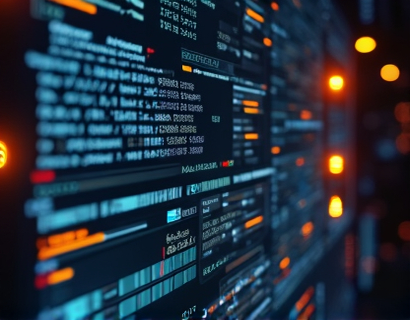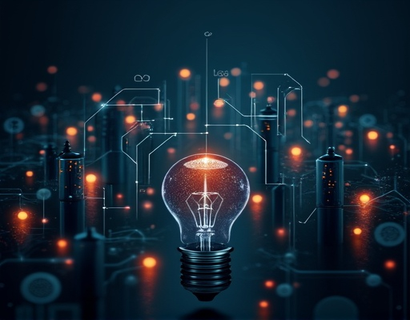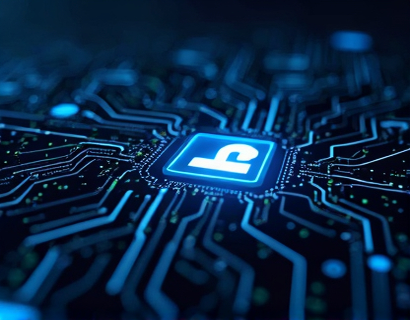Unlocking Digital Potential: Harnessing AI and Crypto for Enhanced Ucosystem Experiences
The digital landscape is rapidly evolving, driven by advancements in artificial intelligence (AI) and the rise of cryptocurrency. These two technologies, when integrated, offer unprecedented opportunities to enhance digital ecosystems, providing more secure, efficient, and personalized experiences for users. This article delves into the transformative potential of combining AI and cryptocurrency to create robust and innovative digital environments. We will explore how tech innovators and early adopters can leverage these technologies to maximize growth and engagement, offering strategic insights that are crucial for navigating the evolving tech landscape.
Understanding AI and Cryptocurrency
Before diving into the integration of AI and cryptocurrency, it's essential to understand each technology individually. Artificial intelligence refers to the simulation of human intelligence processes by machines, particularly computer systems. These processes include learning (the acquisition of information and rules for using it), reasoning (using rules to reach approximate or definite conclusions), and self-correction. AI technologies such as machine learning, natural language processing, and computer vision are already transforming various industries, from healthcare to finance.
Cryptocurrency, on the other hand, is a digital or virtual currency that uses cryptography for security. It operates on a decentralized network, typically a blockchain, which ensures transparency and immutability. Bitcoin, the first and most well-known cryptocurrency, paved the way for thousands of alternative coins (altcoins) and applications. The underlying blockchain technology has the potential to revolutionize not only finance but also supply chain management, identity verification, and more.
Synergies Between AI and Cryptocurrency
The true power of integrating AI and cryptocurrency lies in their synergistic capabilities. AI can enhance the functionality and security of blockchain networks, while blockchain can provide a secure and transparent environment for AI applications. Here are some key areas where these technologies complement each other:
Enhanced Security
Blockchain's inherent security features, such as decentralization and cryptographic hashing, make it an ideal platform for AI applications that handle sensitive data. AI models can be deployed on a blockchain to ensure that data is tamper-proof and that the model's integrity is maintained. This is particularly important in industries like healthcare, where patient data privacy is paramount. By using blockchain, AI models can be trained and executed in a secure environment, reducing the risk of data breaches and ensuring compliance with regulations.
Decentralized AI Marketplaces
Decentralized AI marketplaces, powered by blockchain, allow developers to buy, sell, and trade AI models and data sets in a transparent and trustless manner. AI models can be tokenized, enabling fractional ownership and easier monetization. This marketplace model fosters innovation by allowing a broader range of participants to contribute to the development and improvement of AI technologies. For instance, a developer can upload a machine learning model to a blockchain-based marketplace, receive tokens as payment, and allow others to use the model while earning ongoing fees from its usage.
Smart Contracts for Automated AI Workflows
Smart contracts, self-executing contracts with the terms directly written into code, can automate various AI workflows. In a blockchain environment, smart contracts can trigger AI processes based on predefined conditions, ensuring that tasks are executed efficiently and transparently. For example, in a supply chain management system, a smart contract can automatically initiate an AI-driven analysis of inventory levels when stock falls below a certain threshold, triggering a purchase order without human intervention.
Personalized User Experiences
AI algorithms can analyze vast amounts of user data to provide personalized experiences, but the process often involves handling sensitive information. Blockchain can enhance this by giving users control over their data. Users can choose to share specific data points with AI systems, and these systems can use this data to tailor experiences without compromising privacy. Additionally, blockchain-based reward systems can incentivize users to share their data, creating a win-win scenario where users are compensated for their contributions.
Strategic Insights for Tech Innovators
For tech innovators looking to harness the potential of AI and cryptocurrency, here are some strategic insights to consider:
Build on Decentralized Infrastructure
Developing AI applications on a decentralized blockchain infrastructure can provide several advantages. It ensures data integrity, reduces the risk of single points of failure, and enhances user trust. Consider using blockchain platforms like Ethereum, which supports smart contracts and decentralized applications (dApps), or newer platforms like Polkadot and Solana, which offer scalability and interoperability.
Focus on Data Privacy and Security
With increasing concerns about data privacy, integrating AI with blockchain can offer robust solutions. Implementing zero-knowledge proofs and other privacy-preserving techniques can allow AI models to process sensitive data without exposing it. This not only enhances security but also complies with regulations like GDPR and CCPA.
Explore Tokenization and Incentive Mechanisms
Tokenization can be a powerful tool for creating incentive-driven ecosystems. By tokenizing AI services or data sets, you can create a market where users and developers can transact seamlessly. Implementing token-based reward systems can motivate users to contribute data, participate in AI training, or engage with dApps, fostering a vibrant and active community.
Leverage AI for Blockchain Optimization
AI can also be used to optimize blockchain networks, addressing issues like scalability and energy consumption. Machine learning algorithms can predict network congestion, optimize transaction processing, and improve consensus mechanisms. For example, AI-driven solutions can dynamically adjust the difficulty of mining tasks to maintain network stability and efficiency.
Enhancing User Engagement through AI and Crypto
Engagement is a critical factor in the success of any digital ecosystem. By integrating AI and cryptocurrency, platforms can create more engaging and rewarding experiences for users. Here’s how:
Gamification with Cryptocurrency
Gamification elements, enhanced by cryptocurrency, can significantly boost user engagement. Users can earn tokens for completing tasks, participating in discussions, or contributing valuable content. These tokens can be used to unlock premium features, access exclusive content, or even traded for fiat currency. This not only increases user participation but also creates a sense of ownership and community.
Decentralized Feedback Mechanisms
Implementing decentralized feedback mechanisms using blockchain can make user feedback more transparent and actionable. Users can submit suggestions or report issues, and these inputs can be recorded on the blockchain. AI can analyze this feedback to identify trends and prioritize improvements, ensuring that user voices are heard and acted upon. This transparency builds trust and encourages active participation.
Community-Driven Development
Blockchain and AI can facilitate community-driven development, where users have a direct say in the evolution of a platform. Token holders can vote on proposals, participate in governance, and contribute to the development process. AI can assist in analyzing community sentiment, identifying key issues, and suggesting improvements. This collaborative approach fosters a strong and engaged community, driving continuous innovation and growth.
Case Studies and Real-World Applications
To better understand the practical applications of AI and cryptocurrency, let’s look at some real-world examples:
Decentralized Finance (DeFi)
DeFi platforms leverage blockchain and AI to create financial services that are open, transparent, and accessible. AI algorithms can be used to predict market trends, optimize trading strategies, and manage risk. For instance, a DeFi protocol might use AI to dynamically adjust interest rates based on market conditions, ensuring fair and efficient lending and borrowing processes.
Supply Chain Transparency
Companies are using blockchain to create transparent and traceable supply chains, with AI enhancing the efficiency and accuracy of these systems. For example, Walmart uses blockchain to track the origin and journey of food products, ensuring food safety and quality. AI can analyze this data to identify bottlenecks, predict demand, and optimize logistics, reducing costs and improving customer satisfaction.
Healthcare Data Management
In healthcare, AI and blockchain can work together to manage patient data securely and efficiently. AI algorithms can analyze medical records to provide personalized treatment recommendations, while blockchain ensures that this data is stored securely and can be shared seamlessly between healthcare providers. Patients can control access to their data, earning tokens for sharing it with researchers or healthcare providers, thereby incentivizing data contribution.
Challenges and Considerations
While the integration of AI and cryptocurrency offers numerous benefits, there are also challenges and considerations to keep in mind:
Regulatory Compliance
The regulatory landscape for cryptocurrency is still evolving, and compliance can be complex. Tech innovators must stay informed about local and international regulations and ensure that their AI and blockchain solutions comply with all relevant laws. This includes data protection regulations, anti-money laundering (AML) requirements, and financial regulations.
Technical Complexity
Integrating AI with blockchain requires a high level of technical expertise. Developers need to understand both technologies and how to integrate them effectively. This can be a barrier for smaller organizations or individuals. Collaborating with experienced partners or investing in training can help overcome these challenges.
Scalability and Performance
Blockchain networks, especially public ones, can face scalability issues and high transaction fees. AI can help mitigate these problems by optimizing network performance and developing more efficient consensus mechanisms. However, it’s crucial to carefully evaluate the trade-offs and choose the right blockchain platform for your use case.
Conclusion
The integration of AI and cryptocurrency has the potential to revolutionize digital ecosystems, offering enhanced security, personalized experiences, and decentralized innovation. For tech innovators and early adopters, embracing these technologies can lead to significant growth and engagement. By building on decentralized infrastructure, focusing on data privacy, exploring tokenization, and leveraging AI for optimization, you can create robust and engaging digital environments. As the tech landscape continues to evolve, staying ahead of the curve with strategic insights and innovative solutions will be key to success.










































